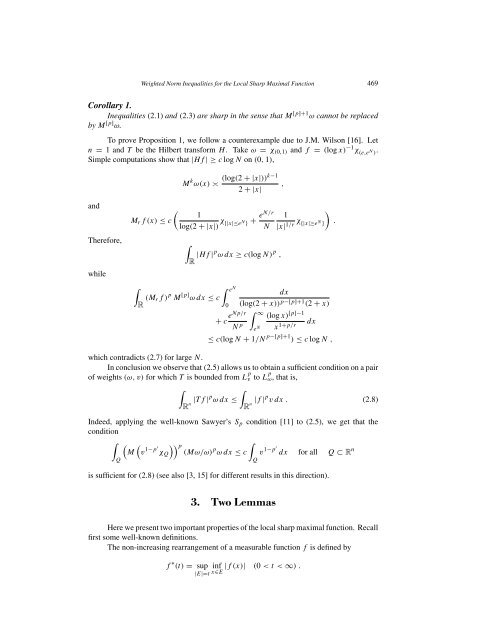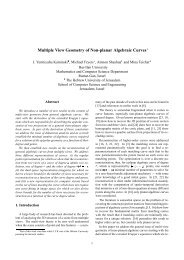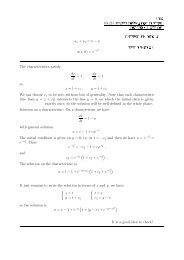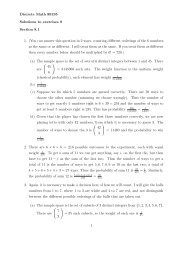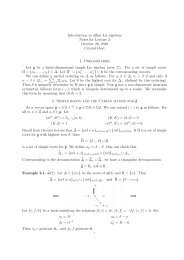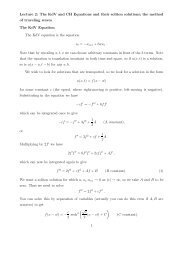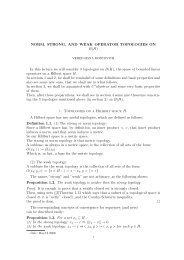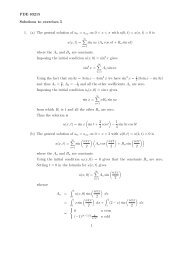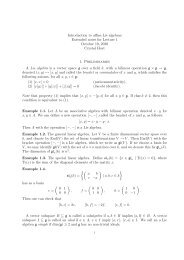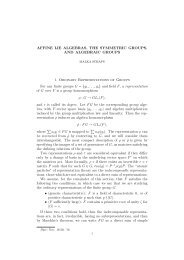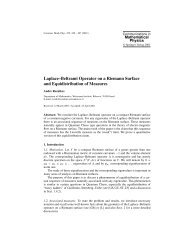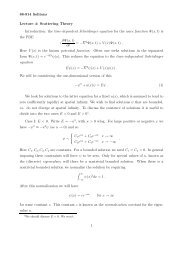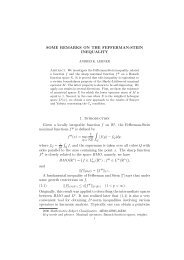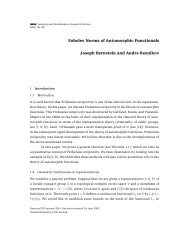Weighted Norm Inequalities for the Local Sharp Maximal Function
Weighted Norm Inequalities for the Local Sharp Maximal Function
Weighted Norm Inequalities for the Local Sharp Maximal Function
Create successful ePaper yourself
Turn your PDF publications into a flip-book with our unique Google optimized e-Paper software.
<strong>Weighted</strong> <strong>Norm</strong> <strong>Inequalities</strong> <strong>for</strong> <strong>the</strong> <strong>Local</strong> <strong>Sharp</strong> <strong>Maximal</strong> <strong>Function</strong> 469Corollary 1.<strong>Inequalities</strong> (2.1) and (2.3) are sharp in <strong>the</strong> sense that M [p]+1 ω cannot be replacedby M [p] ω.To prove Proposition 1, we follow a counterexample due to J.M. Wilson [16]. Letn = 1 and T be <strong>the</strong> Hilbert trans<strong>for</strong>m H . Take ω = χ (0,1) and f = (log x) −1 χ (e,e N ) .Simple computations show that |Hf |≥c log N on (0, 1),M k ω(x) ≍(log(2 +|x|))k−12 +|x|,andThere<strong>for</strong>e,while(M r f(x)≤ c1log(2 +|x|) χ {|x|≤e N } + eN/rN∫R |Hf |p ωdx ≥ c(log N) p ,)1|x| 1/r χ {|x|≥e N } .∫∫ e NR (M rf ) p M [p] dxωdx ≤ c0 (log(2 + x)) p−[p]+1 (2 + x)∫+ c eNp/r ∞(log x) [p]−1N p e N x 1+p/r dx≤ c(log N + 1/N p−[p]+1 ) ≤ c log N,which contradicts (2.7) <strong>for</strong> large N.In conclusion we observe that (2.5) allows us to obtain a sufficient condition on a pairof weights (ω, v) <strong>for</strong> which T is bounded from L p v to L p ω, that is,∫∫R |Tf|p ωdx ≤n R |f |p vdx. (2.8)nIndeed, applying <strong>the</strong> well-known Sawyer’s S p condition [11] to (2.5), we get that <strong>the</strong>condition∫ ( ( )) ∫pM v 1−p′ χ Q (Mω/ω) p ωdx ≤ c v 1−p′ dx <strong>for</strong> all Q ⊂ R nQQis sufficient <strong>for</strong> (2.8) (see also [3, 15] <strong>for</strong> different results in this direction).3. Two LemmasHere we present two important properties of <strong>the</strong> local sharp maximal function. Recallfirst some well-known definitions.The non-increasing rearrangement of a measurable function f is defined byf ∗ (t) = sup|E|=t x∈Einf |f(x)| (0


